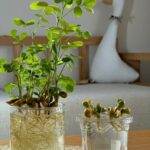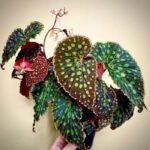Peanuts, often known as groundnuts, are a common food in our daily lives. This versatile nut, packed with nutritional value, can be boiled, roasted, or ground and used in a variety of dishes. But did you know that peanuts can also be grown in small pots as decorative plants? Peanut plants don’t just bear beautiful leaves, they also add a splash of color to your living space.
When grown hydroponically, peanuts can develop rapidly, showing noticeable changes daily. With the right care, the plant will produce bright and attractive yellow flowers.
Growing peanuts hydroponically is not as complicated as it may seem. If you want to give it a try, follow these simple steps:
**Prepare Fresh Peanut Seeds**
Choose fresh peanut seeds, ideally those that have not been chemically treated. These seeds should be fresh and highly active to ensure a good germination rate.
Avoid using dry, shelled peanuts from markets or supermarkets as they may have been chemically treated or may be too old, resulting in low germination rates.
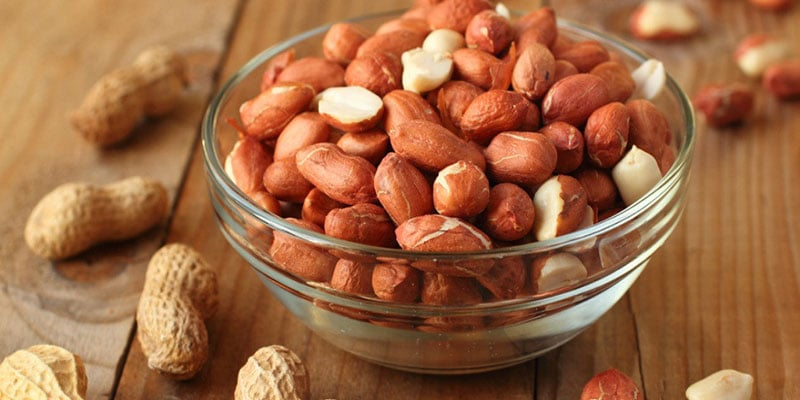
Choose fresh peanut seeds that haven’t been chemically treated.
**Soak the Peanut Seeds**
Soak the peanut seeds in clean water, ensuring that the water completely covers the seeds. The soaking time depends on the freshness of the seeds. Typically, you can soak them for 4 to 10 hours to allow the seeds to absorb enough water for germination.
**Use Paper Towels to Germinate the Seeds**
Prepare a disposable plastic container and make a few small holes in the lid for ventilation. Place a layer of paper towels at the bottom of the container and moisten it with water. Then, arrange the soaked peanut seeds on the paper towel, cover them with another layer of moistened paper towel, and close the container.
Keep the container in a cool, well-ventilated place, maintaining a temperature of around 25°C, to encourage germination. This process usually takes about 4 days.
Once you see the sprouts emerging, carefully remove the outer shell and transfer the seeds to a glass of water. Be gentle to avoid damaging the delicate sprouts.
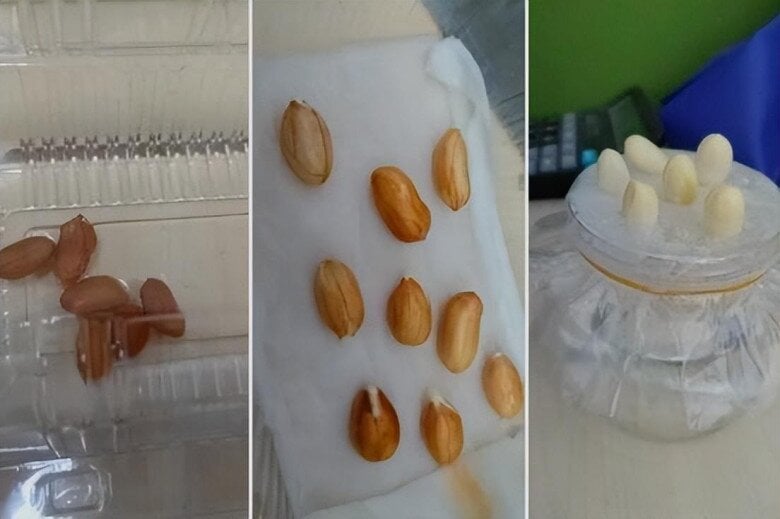
Gently remove the outer shell and transfer the sprouted seeds to a glass of water.
**Prepare the Planting Container**
You can use disposable plastic cups as planting containers for hydroponic peanuts. Make a few holes in the lid of the cup, sized appropriately for the peanut seeds. The number of holes should correspond to the number of seeds you plan to plant.
Place the germinated peanut seeds into the prepared holes, ensuring that the seeds will be in contact with the water. After about 7 days, you’ll notice small green shoots appearing, along with a well-developed root system.
It typically takes about 20 days for the peanut seeds to grow into a small, vibrant plant.
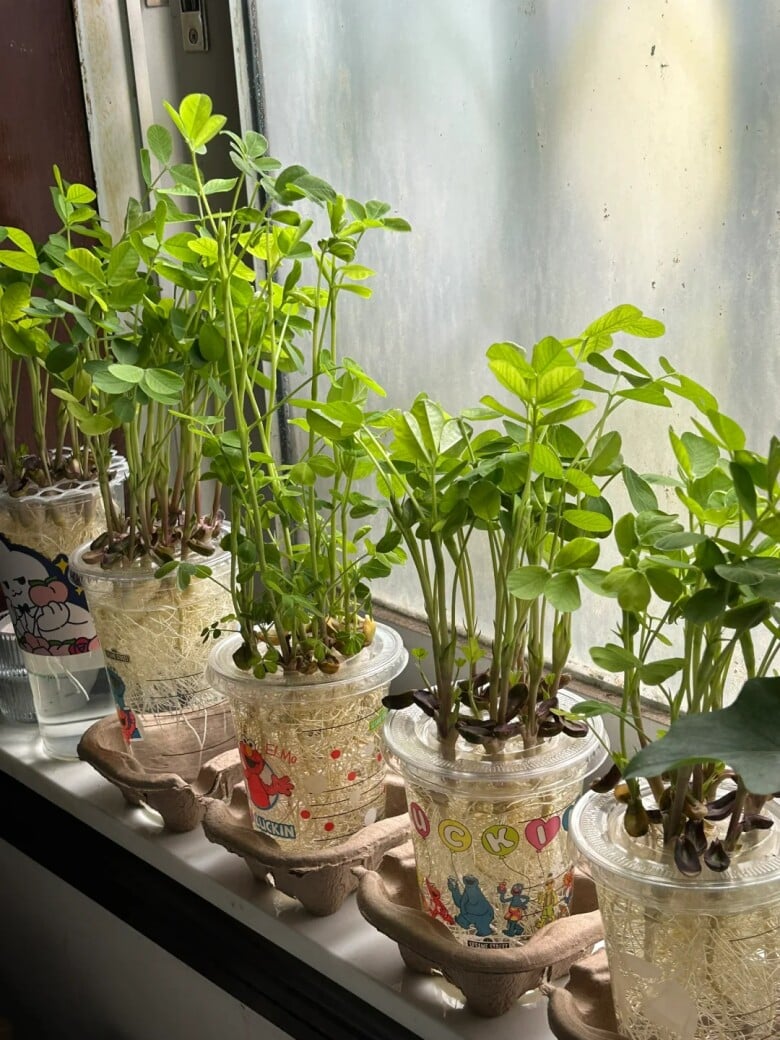
It takes about 20 days for peanut seeds to grow into a vibrant plant.
**Caring for Hydroponic Peanuts**
Peanuts require sufficient light to grow. As the plant starts to develop leaves, gradually increase the amount of light it receives. However, when the environmental temperature is high, limit direct sunlight to prevent damage to the plant. If the temperature drops below 18°C, it is safe to expose the plant to sunlight. In general, diffused light is sufficient for peanut growth.
Once the root system has developed, you don’t need to change the water frequently. If the water level drops, simply add enough water to submerge the roots. If you wish to promote stronger growth, you can add a small amount of nutrient solution to the water after the roots have formed.
You can also transition from hydroponics to soil planting. This not only prolongs the plant’s lifespan but also allows you to harvest peanuts when they are in season.
In addition to peanuts, seeds from fruits such as lychees, mangos, and jackfruits can be grown hydroponically for decorative purposes. For fruit seeds, first remove the outer flesh and then soak the cleaned seeds in water to prevent odor formation.
Grow Pak Choi at Home: Your Ultimate Step-by-Step Guide
Are you planning to grow your own Chinese kale (Brassica alboglabra) at home for a fresh and healthy supply of vegetables? Well, look no further! Our step-by-step guide will teach you everything you need to know to become a Chinese kale-growing master. Get ready to roll up your sleeves and dive into the world of horticulture!


























